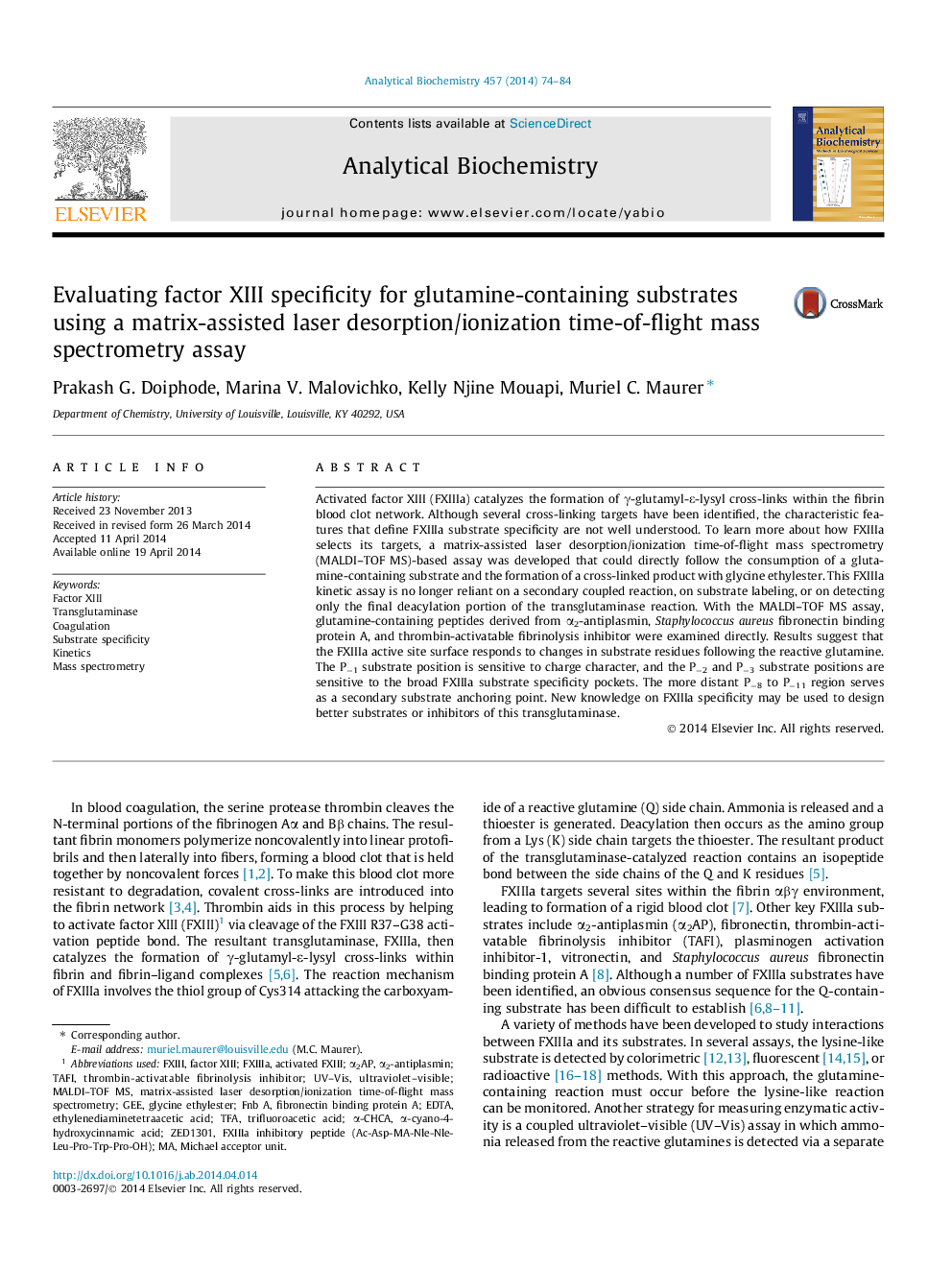| Article ID | Journal | Published Year | Pages | File Type |
|---|---|---|---|---|
| 1172792 | Analytical Biochemistry | 2014 | 11 Pages |
Activated factor XIII (FXIIIa) catalyzes the formation of γ-glutamyl-ε-lysyl cross-links within the fibrin blood clot network. Although several cross-linking targets have been identified, the characteristic features that define FXIIIa substrate specificity are not well understood. To learn more about how FXIIIa selects its targets, a matrix-assisted laser desorption/ionization time-of-flight mass spectrometry (MALDI–TOF MS)-based assay was developed that could directly follow the consumption of a glutamine-containing substrate and the formation of a cross-linked product with glycine ethylester. This FXIIIa kinetic assay is no longer reliant on a secondary coupled reaction, on substrate labeling, or on detecting only the final deacylation portion of the transglutaminase reaction. With the MALDI–TOF MS assay, glutamine-containing peptides derived from α2-antiplasmin, Staphylococcus aureus fibronectin binding protein A, and thrombin-activatable fibrinolysis inhibitor were examined directly. Results suggest that the FXIIIa active site surface responds to changes in substrate residues following the reactive glutamine. The P−1 substrate position is sensitive to charge character, and the P−2 and P−3 substrate positions are sensitive to the broad FXIIIa substrate specificity pockets. The more distant P−8 to P−11 region serves as a secondary substrate anchoring point. New knowledge on FXIIIa specificity may be used to design better substrates or inhibitors of this transglutaminase.
